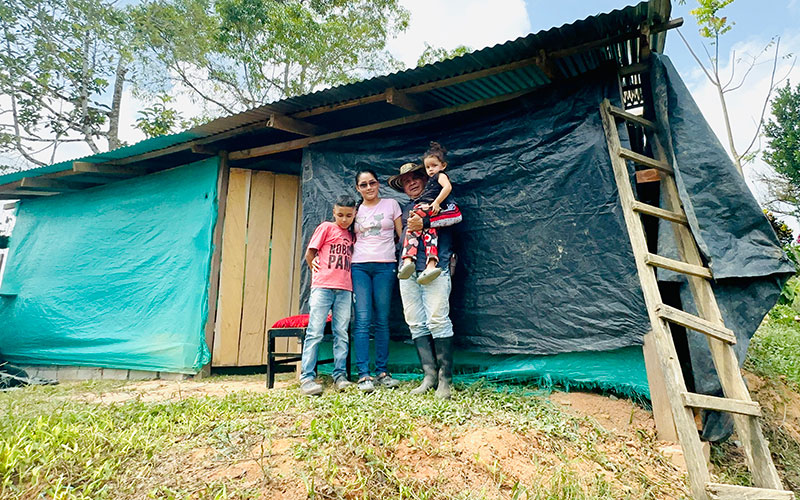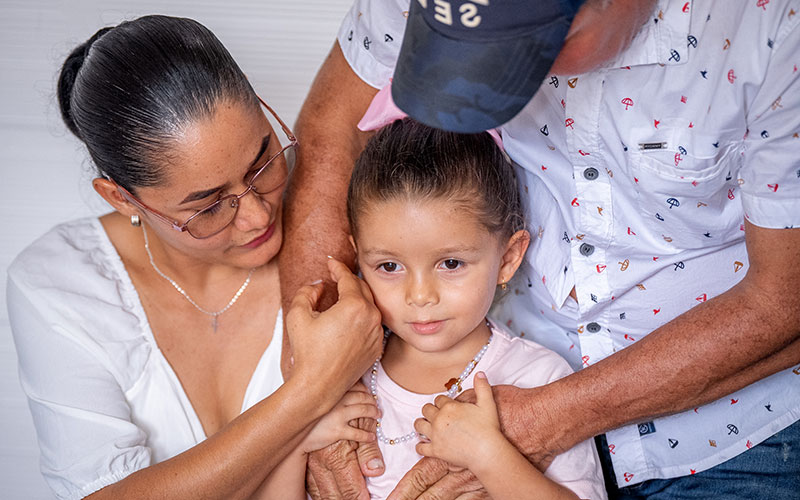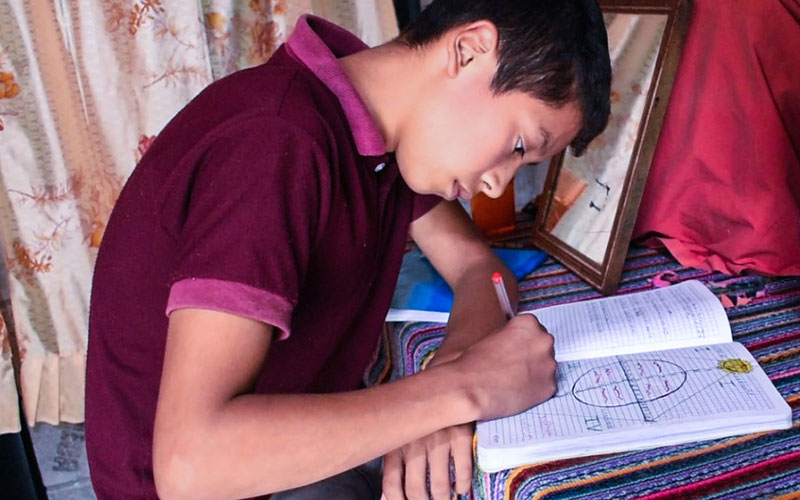A safe home offers more than four walls and a roof. It can provide a haven where children dream, grow, and begin to shape their futures.
But for millions of children in Latin America and the Caribbean, this essential need is lacking, as half the population lives in unsafe housing, many without access to safe water or sanitation.

Their fragile, makeshift houses are often constructed with mud, sticks, plastic, or rusty zinc sheets, offering little protection from rain, wind, or even collapse. Dirt floors trap dampness, putting them at risk of illness, interrupted education, and constant stress.
The Challenges of Housing Insecurity
Housing insecurity is more than an inconvenience. It is a significant barrier to health, learning, and long-term opportunity.
Living in an unsafe home disrupts a child’s growth and development, makes it harder to focus and succeed in school, and limits future job opportunities, ultimately perpetuating the cycle of poverty.
Studies show that by age 5, children growing up in poverty often lag significantly behind their peers in cognitive development.
Research confirms that when children grow up in safe, secure, and stable homes, they are healthier, better educated, and better equipped to escape generational poverty.

“For a child, it’s not only the physical component, but the psychological component,” explained Eli Kuan, Regional Program Director for North & Central America at Food For The Poor. “it’s safety, it’s protection.”
When a child knows they have a safe space to go, it builds confidence, Kuan noted, adding that, “A child that has confidence grows up to be a person that has dreams, that has self-esteem.”
This post addresses three key ways a safe home supports healthy child development, enabling organizations like Food For The Poor to build hope and transform lives.
Three Long-Term Benefits of a Safe Home on Child Development
Food For The Poor has long recognized that a safe home is one of the keys to overcoming poverty. Since its inception in 1982, the charity has built 95,964 homes in Latin America and the Caribbean.
A pillar within the charity’s broader Sustainable Community Development (SCD) strategy, housing addresses the multidimensional aspect of poverty which also includes water, health, education, livelihoods, and local governance.
By providing stability and reducing vulnerability, a safe home can open doors to improved health, educational and socioeconomic opportunities.
1. Improved Educational Outcomes
Overcrowding and housing insecurity correlate with lower educational outcomes.
A safe home can help improve school attendance, performance, and cognitive development by providing a more stable and nurturing environment for learning, socialization, and emotional development.
The impact of receiving a new home creates a powerful domino effect, explained David Langle, Regional Program Manager in South America & the Caribbean at Food For The Poor.
With safe, reliable housing, families are no longer forced to pour their limited financial resources into escalating rents or constant repairs, giving them a chance to invest in their children’s future.
“This gives parents the ability to continue their child’s education, the ability to bring more food to the table,” Langle said, which helps create an environment where education is possible.

Instead of rushing to finish homework outside before the sun sets, children like 11-year-old Miguel in Guatemala, and 9-year-old Darwin in Colombia can now study comfortably indoors.
Miguel loves doing his homework inside, “because when it’s very hot, it feels quite cool.” His favorite spot? The table in his new home, where learning feels a little easier.
Something as simple as a desk, and indoor lighting can make a significant difference in a child’s ability to complete their schoolwork.
“We can now do our homework in our room, we don’t have to go outside to do it,” said Darwin, who loves having his own desk to study.
“Parents want their children to be educated,” Kuan concluded, “because they know that in the long run, education is the door they can walk through that will help break the cycle of poverty.”
2. Improved Health
Safe housing is also linked to long-term health benefits. Children who grow up in stable, secure homes are less likely to be exposed to disease, accidents, and chronic stress.
As Kuan explained, access to essentials like proper sanitation and clean water can make a significant difference in a child’s overall health by reducing the risk of waterborne diseases and other illnesses.
Access to a proper cooking area instead of an open fire allows mothers to prepare meals safely by reducing harmful smoke, further protecting their children’s health.
Over time, these changes can lower health care costs, improve well-being, help families build a pathway out of poverty, and lay a strong foundation for a child’s future.
3. Provides a Solid Socioeconomic Foundation
Living in a safe, secure home “definitely impacts a person’s ability to feel safe, happy,” Langle said. “There’s a significant difference of night and day when you provide safe housing to a family compared to where they were previously living.”
A stable home gives parents the stability they need to build a better future for their children.
It provides children with a safe space to connect with family and friends, fostering healthy social skills like communication, cooperation, and empathy.

For parents like Wilson and Luz, living in a safe and secure home provides peace of mind that their children, Darwin and 3-year-old Zharitk, now have the opportunity to thrive and build a brighter future for themselves.
“It’s a fundamental necessity to help anybody take that next step out of poverty,” Langle said.
Stable housing opens the doors to better job opportunities, improves long-term outcomes, and provides economic security – not just for children and their families – but for entire communities.
“Housing is just not the house,” Kuan said. “You’re changing a life right here.”
Building a Foundation for a Brighter Future
When families have a place to call home, everything changes: children thrive, parents find stability, hope, and the possibility of endless opportunities.
When entire communities are built on this foundation, the ripple effect is profound as lives are transformed.
Every brick laid today builds a foundation for a stronger tomorrow.
Visit our website to learn how you can help build a foundation of hope and transform lives.
Sources:
The Socioeconomic Achievement Gap in the US Public Schools – Ballard Brief
The Role of Housing in Promoting Health and Well-Being — Norfolk Housing Association
How Housing Instability Affects Educational Outcomes | Housing Matters
When little kids don’t have stable housing, it can affect their health later : Shots – Health News : NPR

